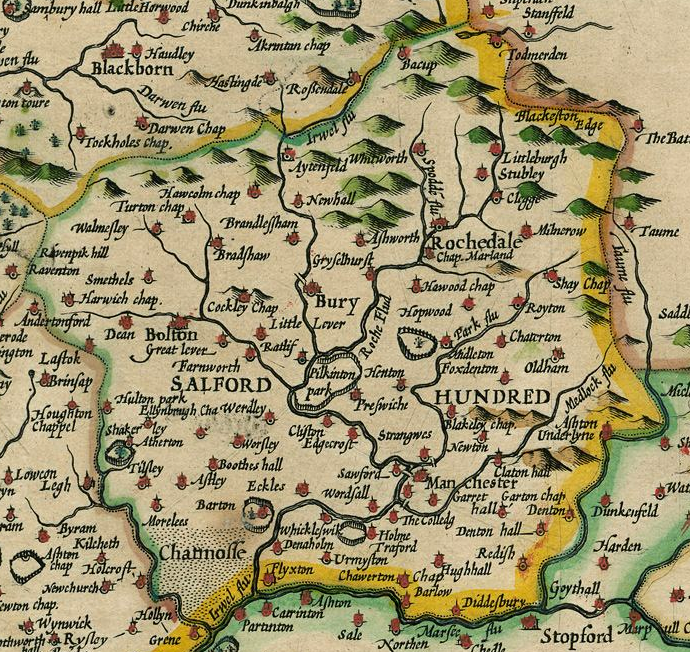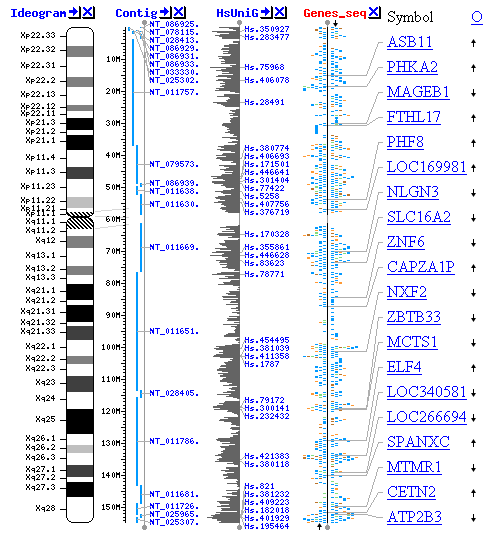|
Desmond Higham
Desmond John Higham (born 17 February 1964 in Salford) is an applied mathematician and Professor of Numerical Analysis the School of Mathematics at the University of Edinburgh, United Kingdom. He is a graduate of the Victoria University of Manchester gaining his BSc in 1985, MSc in and 1986 and PhD 1988. He was a postdoctoral Fellow at the University of Toronto before taking up a Lectureship at the University of Dundee in 1990 and moving to a Readership at the University of Strathclyde in 1996. He was made Professor in 1999 and awarded the "1966 Chair of Numerical Analysis" in 2011. He moved to the University of Edinburgh in April 2019. Higham's main area of research is stochastic computation, with applications in artificial intelligence, data science, network science and computational biology. He held a Royal Society Wolfson Research Merit Award (2012–2017) and is a Society for Industrial and Applied Mathematics (SIAM) Fellow and Fellow of the Royal Society of Edinburgh. ... [...More Info...] [...Related Items...] OR: [Wikipedia] [Google] [Baidu] |
Salford, Greater Manchester
Salford ( ) is a City status in the United Kingdom, city in Greater Manchester, England, on the western bank of the River Irwell which forms its boundary with Manchester city centre. Landmarks include the former Salford Town Hall, town hall, Salford Cathedral, Salford Lads' Club and St Philip's Church, Salford, St Philip's Church. In 2021 it had a population of 129,794. The demonym for people from Salford is ''Salfordian''. Salford is the main settlement of the wider City of Salford metropolitan borough, which incorporates Eccles, Greater Manchester, Eccles, Pendlebury, Swinton, Greater Manchester, Swinton and Walkden. Salford was named in the Early Middle Ages, though evidence exists of settlement since Neolithic times. It was the seat of the large Hundred of Salford in the Historic counties of England, historic county of Lancashire and was granted a market charter in about 1230, which gave it primary cultural and commercial importance in the region.. It was eventually overt ... [...More Info...] [...Related Items...] OR: [Wikipedia] [Google] [Baidu] |
Stochastic
Stochastic (; ) is the property of being well-described by a random probability distribution. ''Stochasticity'' and ''randomness'' are technically distinct concepts: the former refers to a modeling approach, while the latter describes phenomena; in everyday conversation, however, these terms are often used interchangeably. In probability theory, the formal concept of a '' stochastic process'' is also referred to as a ''random process''. Stochasticity is used in many different fields, including image processing, signal processing, computer science, information theory, telecommunications, chemistry, ecology, neuroscience, physics, and cryptography. It is also used in finance (e.g., stochastic oscillator), due to seemingly random changes in the different markets within the financial sector and in medicine, linguistics, music, media, colour theory, botany, manufacturing and geomorphology. Etymology The word ''stochastic'' in English was originally used as an adjective with the ... [...More Info...] [...Related Items...] OR: [Wikipedia] [Google] [Baidu] |
21st-century British Mathematicians
File:1st century collage.png, From top left, clockwise: Jesus is crucified by Roman authorities in Judaea (17th century painting). Four different men (Galba, Otho, Vitellius, and Vespasian) claim the title of Emperor within the span of a year; The Great Fire of Rome (18th-century painting) sees the destruction of two-thirds of the city, precipitating the empire's first persecution against Christians, who are blamed for the disaster; The Roman Colosseum is built and holds its inaugural games; Roman forces besiege Jerusalem during the First Jewish–Roman War (19th-century painting); The Trưng sisters lead a rebellion against the Chinese Han dynasty (anachronistic depiction); Boudica, queen of the British Iceni leads a rebellion against Rome (19th-century statue); Knife-shaped coin of the Xin dynasty., 335px rect 30 30 737 1077 Crucifixion of Jesus rect 767 30 1815 1077 Year of the Four Emperors rect 1846 30 3223 1077 Great Fire of Rome rect 30 1108 1106 2155 Boudican revolt ... [...More Info...] [...Related Items...] OR: [Wikipedia] [Google] [Baidu] |
SIAM Review
Society for Industrial and Applied Mathematics (SIAM) is a professional society dedicated to applied mathematics, computational science, and data science through research, publications, and community. SIAM is the world's largest scientific society devoted to applied mathematics, and roughly two-thirds of its membership resides within the United States. Founded in 1951, the organization began holding annual national meetings in 1954, and now hosts conferences, publishes books and scholarly journals, and engages in advocacy in issues of interest to its membership. Members include engineers, scientists, and mathematicians, both those employed in academia and those working in industry. The society supports educational institutions promoting applied mathematics. SIAM is one of the four member organizations of the Joint Policy Board for Mathematics. Membership Membership is open to both individuals and organizations. By the end of its first full year of operation, SIAM had 130 membe ... [...More Info...] [...Related Items...] OR: [Wikipedia] [Google] [Baidu] |
Ernesto Estrada (scientist)
Ernesto Estrada (born 2 May 1966) is a Cuban-Spain, Spanish scientist. He has been Senior ARAID Researcher at the Institute of Mathematics and Applications at the University of Zaragoza, Spain since 2019. Before that he was the chair in Complexity Science, and full professor at the Department of Mathematics and Statistics of the University of Strathclyde, Glasgow, United Kingdom. He is known by his contributions in different disciplines, including mathematical chemistry and complex network theory. Birth and education Estrada was born in the city of Sancti Spiritus, in the central region of Cuba. Since the age of 11 he studied in a school which specialized in exact sciences. He later studied for a technical degree in Analytical chemistry in the technological institute IPQI Mártires de Girón Havana. At the age of 18 years, and before entering the university, he presented his first scientific paper in an international congress together with his mentor, Dr. Jose F. Fernández-B ... [...More Info...] [...Related Items...] OR: [Wikipedia] [Google] [Baidu] |
Nicholas Higham
Nicholas John Higham FRS (25 December 1961 – 20 January 2024) was a British numerical analyst. He was Royal Society Research Professor and Richardson Professor of Applied Mathematics in the Department of Mathematics at the University of Manchester. Early life and career Nicholas John Higham was born in Salford on 25 December 1961. He was educated at Eccles Grammar School, Eccles College, and the University of Manchester, from which he gained his B.Sc. in mathematics (1982), M.Sc. in Numerical Analysis and Computing (1983), and PhD in Numerical Analysis (1985). His PhD thesis was supervised by George Hall. He was appointed lecturer in mathematics at the University of Manchester in 1985, where he has been Richardson Professor of Applied Mathematics since 1998. In 1988–1989 he was Visiting Assistant Professor of Computer Science at Cornell University, Ithaca, New York. Research Higham is best known for his work on the accuracy and stability of numerical algorithms. He h ... [...More Info...] [...Related Items...] OR: [Wikipedia] [Google] [Baidu] |
Edinburgh Mathematical Society
The Edinburgh Mathematical Society is a mathematical society for academics in Scotland. History The Society was founded in 1883 by a group of Edinburgh school teachers and academics, on the initiative of Alexander Yule Fraser FRSE and Andrew Jeffrey Gunion Barclay FRSE, both maths teachers at George Watson's College, and Cargill Gilston Knott, the assistant of Peter Guthrie Tait, professor of physics at the University of Edinburgh. The first president, elected at first meeting on 2 February 1883, was J.S. Mackay, the head mathematics master at the Edinburgh Academy. The Society was founded at a time when mathematics societies were being created around the world, but it was unusual in being founded by school teachers rather than university lecturers. This was because, due to the very small number of mathematical academic positions in Scotland at the time, many skilled mathematics graduates chose to become schoolteachers instead. The fifty five founding members contained teac ... [...More Info...] [...Related Items...] OR: [Wikipedia] [Google] [Baidu] |
London Mathematical Society
The London Mathematical Society (LMS) is one of the United Kingdom's Learned society, learned societies for mathematics (the others being the Royal Statistical Society (RSS), the Institute of Mathematics and its Applications (IMA), the Edinburgh Mathematical Society and the Operational Research Society (ORS). History The Society was established on 16 January 1865, the first president being Augustus De Morgan. The earliest meetings were held in University College London, University College, but the Society soon moved into Burlington House, Piccadilly. The initial activities of the Society included talks and publication of a journal. The LMS was used as a model for the establishment of the American Mathematical Society in 1888. Mary Cartwright was the first woman to be President of the LMS (in 1961–62). The Society was granted a royal charter in 1965, a century after its foundation. In 1998 the Society moved from rooms in Burlington House into De Morgan House (named after t ... [...More Info...] [...Related Items...] OR: [Wikipedia] [Google] [Baidu] |
Shephard Prize
The Shephard Prize is awarded by the London Mathematical Society to a mathematician or mathematicians for making a contribution to mathematics with a strong intuitive component which can be explained to those with little or no knowledge of university mathematics, though the work itself may involve more advanced ideas. The prize will be awarded in even-numbered years and is the result of a donation made to the Society by Geoffrey Shephard. The Shephard Prize may not be awarded to any person who has received the De Morgan Medal or the Pólya Prize. Winners The winners of the Shephard Prize have been: * 2015 Keith Ball * 2020 Desmond Higham *2020 Kenneth Falconer * 2022 Andrew Lobb * 2024 Samir Siksek See also * List of mathematics awards This list of mathematics awards contains articles about notable awards for mathematics. The list is organized by the region and country of the organization that sponsors the award, but awards may be open to mathematicians from around the w ... [...More Info...] [...Related Items...] OR: [Wikipedia] [Google] [Baidu] |
Royal Society Wolfson Research Merit Award
The Royal Society Wolfson Fellowship, known as the Royal Society Wolfson Research Merit Award until 2020, is a 5 years fellowship awarded by the Royal Society since 2000. The scheme is described by the Royal Society as providing ''long-term flexible funding for senior career researchers recruited or retained to a UK university or research institution in fields identified as a strategic priority for the host department or organisation.'' It is administered by the Royal Society and jointly funded by the Wolfson Foundation and the UK Office of Science and Technology, to provide universities "with additional financial support to attract key researchers to this country or to retain those who might seek to gain higher salaries elsewhere." to tackle the brain drain. They are given in four annual rounds, with up to seven awards per round. Since 2021, the Royal Society Wolfson Fellowships program has expanded to include a Visiting Fellowship strand. Recipients Winners of this award (see ... [...More Info...] [...Related Items...] OR: [Wikipedia] [Google] [Baidu] |
Computational Biology
Computational biology refers to the use of techniques in computer science, data analysis, mathematical modeling and Computer simulation, computational simulations to understand biological systems and relationships. An intersection of computer science, biology, and data science, the field also has foundations in applied mathematics, molecular biology, cell biology, chemistry, and genetics. History Bioinformatics, the analysis of informatics processes in biological systems, began in the early 1970s. At this time, research in artificial intelligence was using network models of the human brain in order to generate new algorithms. This use of biological data pushed biological researchers to use computers to evaluate and compare large data sets in their own field. By 1982, researchers shared information via Punched card, punch cards. The amount of data grew exponentially by the end of the 1980s, requiring new computational methods for quickly interpreting relevant information. Per ... [...More Info...] [...Related Items...] OR: [Wikipedia] [Google] [Baidu] |

